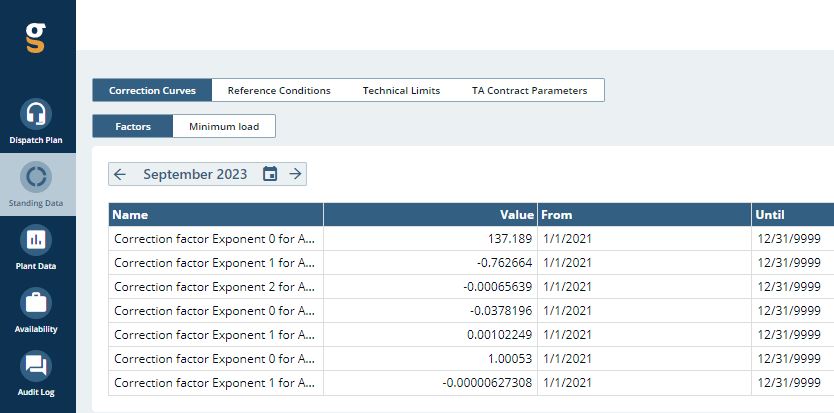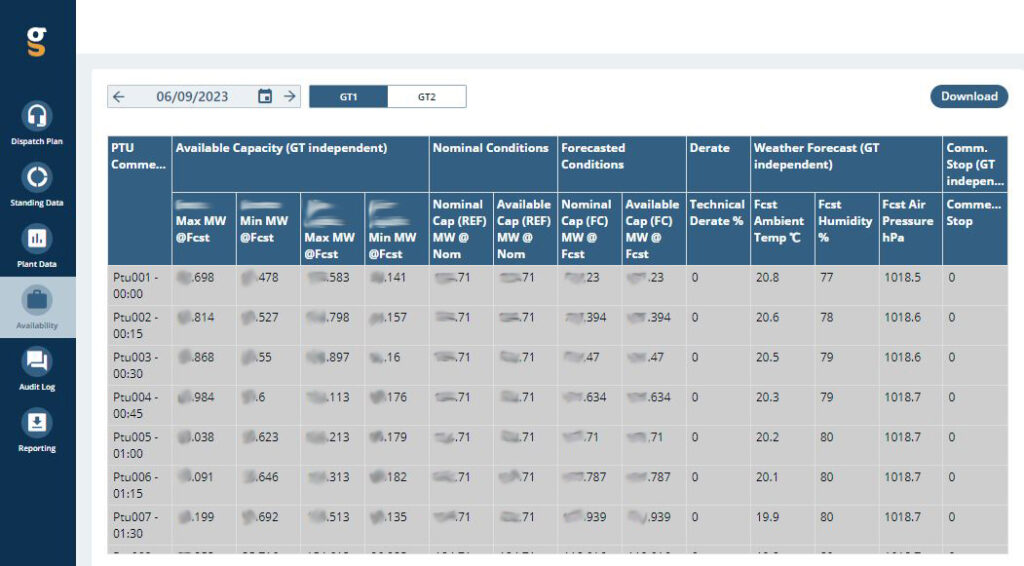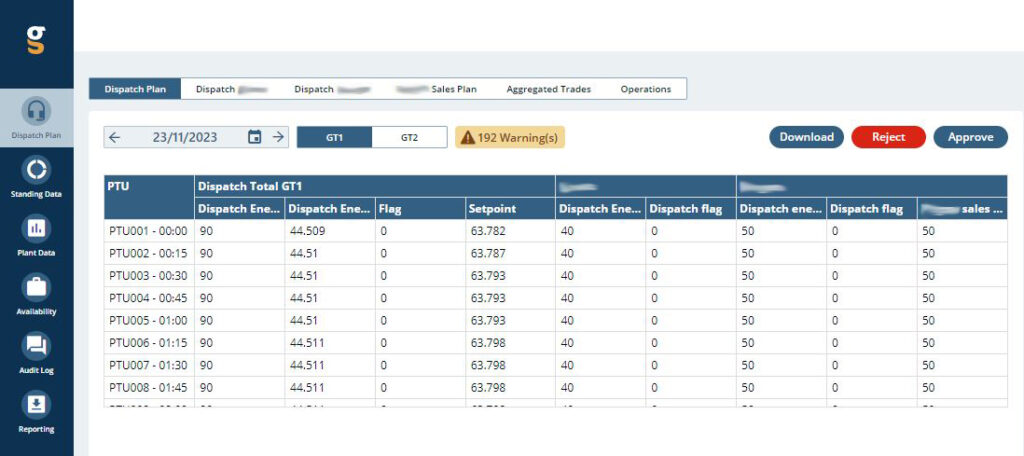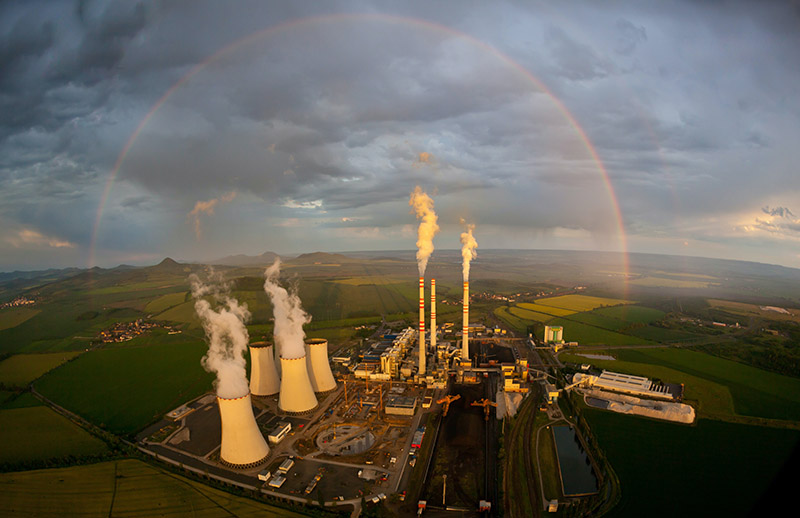Leveraging our experience
Energy One is well known for ETRM, gas and power operations solutions, and complementary outsourced operations services for balancing and short-term trading on behalf of our customers.
However, this is not all we do! Over the years, the team at Energy One Belgium has gained specialist knowledge while developing solutions for nomination, balancing and market communication across gas and power grids in the UK and Europe.
We leveraged this experience to develop several custom software solutions. In this blog, we will dive into one of these solutions: an asset management solution for a gas-fired power plant.
The A-Team
Mid-2020 we were invited by a large industrial company to participate in an RFP to build a new solution for the day-to-day management of a gas-fired power plant in The Netherlands. Half a year later, we were awarded the project to replace the current asset management solution.
Because the existing solution was to ‘sunset’ by end of July 2021, our team would only have eight months to develop, test and go-live once we were awarded the contract. We realized that we were going to need the best of the best to get this project over the line on time and with all the features described in the RFP. Our Product Owner remembered a famous childhood quote: “If you have a problem, if no one else can help, and if you can find them, maybe you can hire…The A-Team!”
Following this epiphany our CTO and Product Owner built a dedicated project team with a diverse and complementary skillset, featuring our most experienced business analysts, developers and UX designers. These people were briefed on the requirements and participated in the RFP process. In the later stages of the RFP, we also shared our way of working and proposed approach with the client.
Afterwards our team discussed the scope and requirements with key customer stakeholders . Based on this feedback loop, our team created and refined a detailed project roadmap with bi-weekly sprints, key milestones, and all the trappings of good project management. This meant that as soon as the deal was closed, we could dig in and start bringing the roadmap to life.
Why did our client choose Energy One?
The client wanted to find a partner that was able to deliver a qualitative solution within a very ambitious timeline. Energy One was a known entity to them, because the client had been using our software and outsourced operations services for almost a decade to balance and nominate their gas portfolio across several European grids. In 2020, we successfully added the ability to balance their power portfolio on the Belgian power grid.
Our long-term working relationship meant they trusted our capabilities and expertise to handle this project successfully, given the ambitious timeline and scope. Of course, we had to convince them during a long and diligent vendor selection process that we would deliver.
And deliver we did. Our team managed to have the solution in production by June 2021; a full month ahead of schedule, which allowed for ample time to test and enhance the system before the real ‘go live’. The key to success was a combination of our expertise, agile way of working and intense collaboration with the customer from start to finish.
What does the solution do?
In short, our asset management solution allows the client to run the gas-fired power plant using an intuitive and modern User Interface. Key features include:
- Using forecasts and data models to calculate power availability
- Communication with Production Steering Systems
- Manage nominations with contract counterparties
- Market Communication with counterparties
- Schedule planned outages
- Reporting and audit logs
- Alerts and error notifications
- User management and permissions
- Intraday flexibility (see ‘Stage 2’ below)
What does the daily workflow look like?
1. The solution combines dynamic data (planned outages, plant and weather data) with static data (ambient conditions, technical limits, correction curves) to calculate the available power production capacity – you can see an example of the data used below:

2. Our solution sends this ‘availability declaration’ to the counterparties operating the turbines:

3. The turbine operators use the availability declaration and calculate their own ‘dispatch plan’
4. The dispatch plans are reviewed and approved by the power plant operator
5. Our system receives the approved combined tollers nominations and calculates the production plan for each turbine for the day-ahead

6. Our solution sends the production plan to the production steering team, which will set the gas turbines to the appropriate output levels
Stage 2: Adding intra-day functionality
The scope for the first stage of this project was to deliver a working solution, limited to the (many) essential features. However, during the RFP, one of the requests was an expansion of the system to allow for intraday flexibility.
The power plant sells part of its production on the Dutch EPEX market. Before this project, most of its production was sold on the Day-Ahead (DA) market. However, with IntraDay price volatility increasing due to more renewable energy production, the client wanted to explore ways to participate in the Intraday market.
Stage 2’s aim was to add-on an Intraday trading module, as well as a tool for the settlement of intraday trading deals with their counterparties. After a well-deserved vacation, our team started development of Stage 2 towards the end of Q3 2021. The first release took place mid-way of Q4 2021, and additional features were added in Q1 2022.
Currently, our team maintains the solution and we regularly have status updates with the customer. Further refinements and upgrades are also discussed and developed when the need arises.
Looking back and looking ahead
While our team was familiar with adding new features and even full new product releases for gas and power operations on European grids, building a custom solution from the ground up was quite a daunting task at first.
Energy One was confident from the start it could make it happen, and having delivered this solution, it proved to be a catalyst for the team to also look at other incoming requests from clients. Since then, we have also developed a custom (gas) Storage Management Application for a German storage operator (SSO), which we’ll share more about later this year, and we are actively working on an IT system for an offshore gas grid in Europe which handles nominations, capacities and prices.
Our Head of Product, Thomas Van Buggenhout, shares how we made this happen:
“The key to success for delivering an ambitious project on time is combining three elements: Intense collaboration with the client; an agile way of working and having the right people on the project.
The first two elements are intertwined: You can’t work in an agile way, where you develop and test new features during weekly sprints, without regular feedback from the client. Therefore, we had weekly meetings with the customer where we demonstrated these new features, reviewed the roadmap and discussed Quality Assurance such as bug fixes and improvements.
Of course, you also need to have the right people in place, so our business analysts and developers were all seniors with many years of experience in the industry. This helped them to quickly grasp the concepts and technical requirements, and propose actionable solutions.
Our customer also had a core project team which was involved from the RFP until long after we went live. Even nowadays, in 2023, we have regular meetings with these stakeholders. The system is running very well, and sometimes our customer thinks of new features. For example, we’re actively working with the client on a full solution review and expansion, which you could call ‘Stage 3’ of this project.
In the coming months, we’ll be featuring more articles about other custom projects.
Got a project in mind? Feel free to reach out to see how we can help you !


